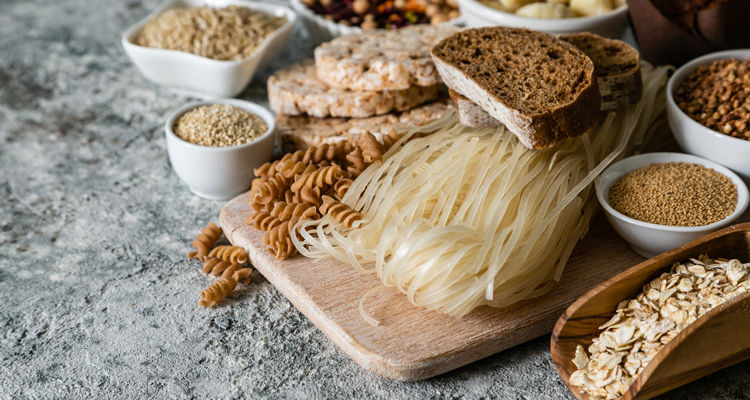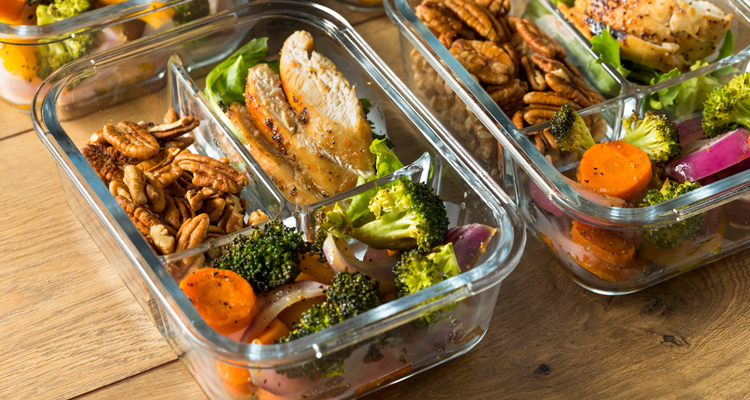SSS Team, SSSPORTS.COM

If you’ve just begun your fitness and weight-loss journey, you may have heard the phrase, “carbs are the problem”. But if you’ve stayed on this journey long enough, you realize that there is more to it than meets the eye.
Carbs aren’t necessarily bad. It’s just a matter of how they are consumed. When consumed with purpose and strategy, they actually help you in your fitness journey. Carb cycling is a method that seeks to do just that.
Carbohydrates are one of the 3 major macronutrients besides proteins and fats. They fuel working muscles and the nervous system with energy. Carbs are classified as simple or complex, which are differentiated based on chemical structure and how quickly the sugar is absorbed and digested.

Simple carbohydrates contain just one or two sugars, such as fructose (fruits) and galactose (milk products). These single sugars are called monosaccharides. Carbs with two sugars — such as sucrose (table sugar), lactose (dairy) and maltose (beer, some vegetables) — are called disaccharides.
Complex carbohydrates (polysaccharides) have three or more sugars. They are often referred to as starchy foods and include beans, peas, lentils, peanuts, potatoes, corn, parsnips, whole-grain breads and cereals. Simple carbs are digested and absorbed more quickly and easily than complex carbs.
Carb cycling is the strategic alteration of carbohydrates between low and high-carb days in order to prevent a fat loss plateau and improve workout performance. The plan is highly individual-specific for how many grams of carbs to eat based on body weight, age, gender, intensity of workouts, etc. It’s always recommended to consult a dietician for best results.

We’ve covered most of the Basics Of Carb Cycling in the previous blog on this topic. Now, we take a more actionable look at it with a sample plan. Let’s assume the below is how you workout in a week.
Monday: Upper Body Workout / High Carb
Tuesday: HIIT / Low Carb
Wednesday: Rest Day/ Low Carb
Thursday: Lower Body Workout / High Carb
Friday: Off or 20 minutes of cardio / Low Carb
Saturday: Full Body Workout / High Carb
Sunday: Rest Day/ Low Carb
Consequently, you’ll have to match the days of high intensity and days of low intensity with the corresponding carbs consumed on that day. Fitness tracking and calorie counting apps should be helpful.
The below sample plan should provide some more clarity as to how it can be structured.
Sample High Carb Day
Sample Low carb day
As a thumb rule, be sure to include staple complex carbs like sweet or white potato, oatmeal quinoa, whole wheat, pasta or tortillas, fruit berries, rice and whole grain bread. Stay cautious of the processed stuff like doughnuts, cakes, cookies, Pizza, muffins, croissants, etc.

High carb days are essential as they stimulate an insulin response that shuttles nutrients in your muscle cells, causing them to grow and replenish muscle glycogen stores. Low carb days promote fat loss by burning fat for fuel instead of carbs and increases insulin receptivity, thereby improving your body’s muscle-building response. The best results are achieved when the days are alternated periodically. A cheat meal now and then won’t trash all your progress but make sure you stick to the plan for the most part of the month.
Tag us in your workouts and meals on Instagram @sunsandsports.
Stay tuned for more recipes, fitness and health tips!
Subscribe to our newsletter and download our app on the App Store or Google Play for latest update.